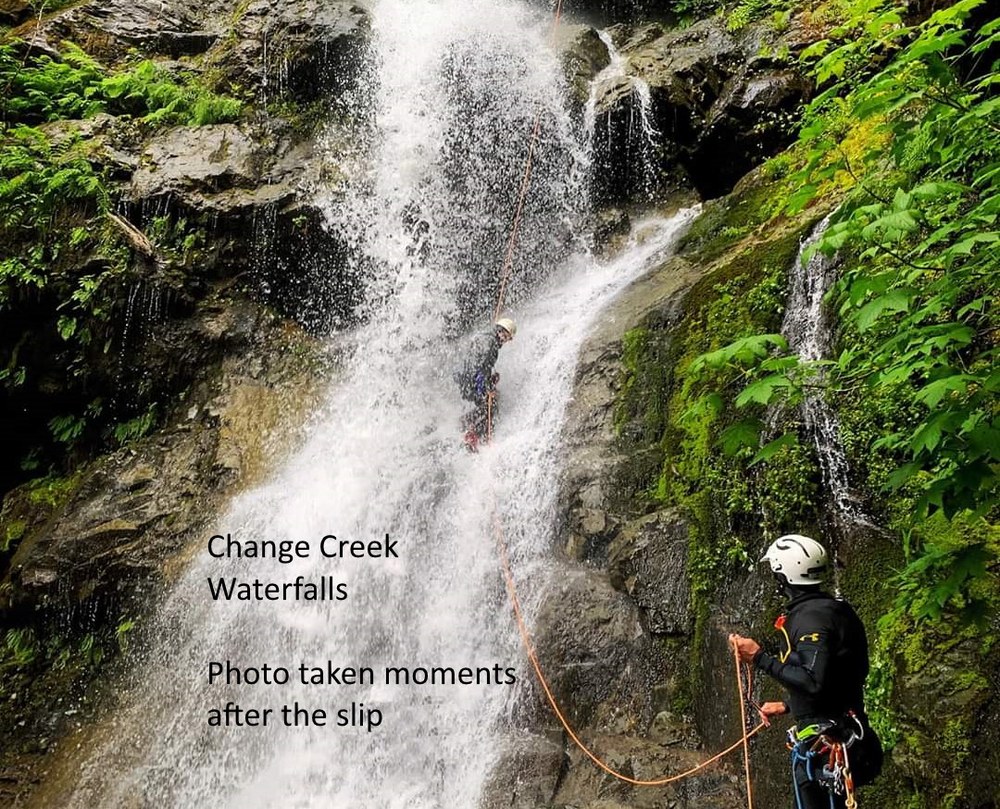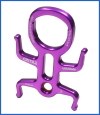
As Mountaineers, we are committed to learning from our experiences. We examine every incident that happens on a Mountaineers trip for opportunities to improve the ways we explore and teach. Our volunteer safety committee reviews every incident report and picks a few each month to share as examples of ‘Lessons Learned’. The trip report below describes what happened on this trip, in the leader’s own words, and outlines the lessons the leader has identified. In some cases, we offer additional key learnings from the incident.
Sharing incidents creates an opportunity to analyze specific incidents and also identify larger incident trends. We appreciate every volunteer trip leader who takes the time to share their incidents and near-misses so that others can benefit. We ask that readers engage critically and respectfully in the spirit of sharing and learning.
CHANGE CREEK, NORTH BEND – 19 JULY
FROM THE INCIDENT DATABASE: LEADER INCIDENT REPORT
COURSE LEADER
This incident occurred during the Technical Waterfall Canyoning Course and happened in Change Creek on the tallest 105' rappel. This rappel is in the water flow, and the topography is ledgy.
One of the students slipped as she was navigating the ledgy terrain, and smashed her left hand, which was on the brake rope, between the rock and her hip. She was able to continue to control the remainder of the rappel and used her training to add friction to the descender to assist a 1-handed descent. She was on a fireman's belay, although she did not need to rely on it.
When the injured student arrived at the bottom of the rappel, she revealed her swollen, bruised hand to the other course mates, who accessed the group first aid kit and attended to her.
The group instructor, along with the help of others in the group, used partner-assist techniques and rope systems to safely help the injured student through the remainder of the canyon.
The injured student visited the doctor after the course, who determined that her hand was not broken - only very bruised.
STUDENT
I am a participant in the Waterfall Technical Canyoning Course. On July 18, I had a clinic day scheduled in Rachor Canyon. When we showed up to the trail head it was apparent that the day’s water flow was too high to safely progress through the canyon. The instructor decided to relocate the day’s clinic to Change Creek where the other group from our class was practicing. When we arrived at Change Creek it was clear that the water level would allow safe progression through the canyon.
During the 31m waterfall rappel my foot slipped and I swung into a roof crushing my left hand between the edge of the roof and my hip. I had two hands on the break strand. My right hand was uninjured but my left hand was crushed.
I switched to slow mode on my *CRITR device and continued to rappel down using primarily my right hand as I realized I could no longer effectively grasp the break strand with my left hand. During the rappel I was on fireman belay but the rope was not pulled since I was independently able to move myself down the falls and appeared okay.
When I finished the rappel, I reported what had occurred to my teammates and received first aid from other students. There was minimal bleeding—it was mainly a scrape and two large hematomas on the back side of my hand. The swelling was significant and I was in a large amount of pain with waves of nausea.
I was alert enough to make decisions and accepted ibuprofen, elevated my hand above my heart, and stuck it in a nearby ice cold waterfall. My teammates stayed with me assessing my condition regularly until the instructor descended. Everyone helped me descend the remainder of the canyon. The instructor lowered me via belay for the second to last rappel and another student helped me avoid the final rappel by walking along the bank of the canyon.
Lessons Learned
COURSE LEADER
Everything went as smoothly as possible given the situation. It was a great reminder of the importance of having someone on fireman's brake, and while it was never engaged, the incident cemented in the students' minds the criticality of routinely providing a fireman's brake. The course had included a focus on ways students could change their friction as they descend, and the student employed this training to increase her safety after her hand was compromised. The group had plenty of medical training among them, and the instructor had the technical expertise to help the student safely navigate the remainder of the canyon.
This was a situation where everyone involved had the training to be in that environment, and everyone was employing best practices within that training. Slips happen, and this was an unfortunate slip.
*CRITR
A rappel device, popular with Canyoners, that allows friction to be increased or reduced during the rappel. The CRITR2’s design minimizes rope twists on single line rappels and also locks off easily.
 David Shema
David Shema